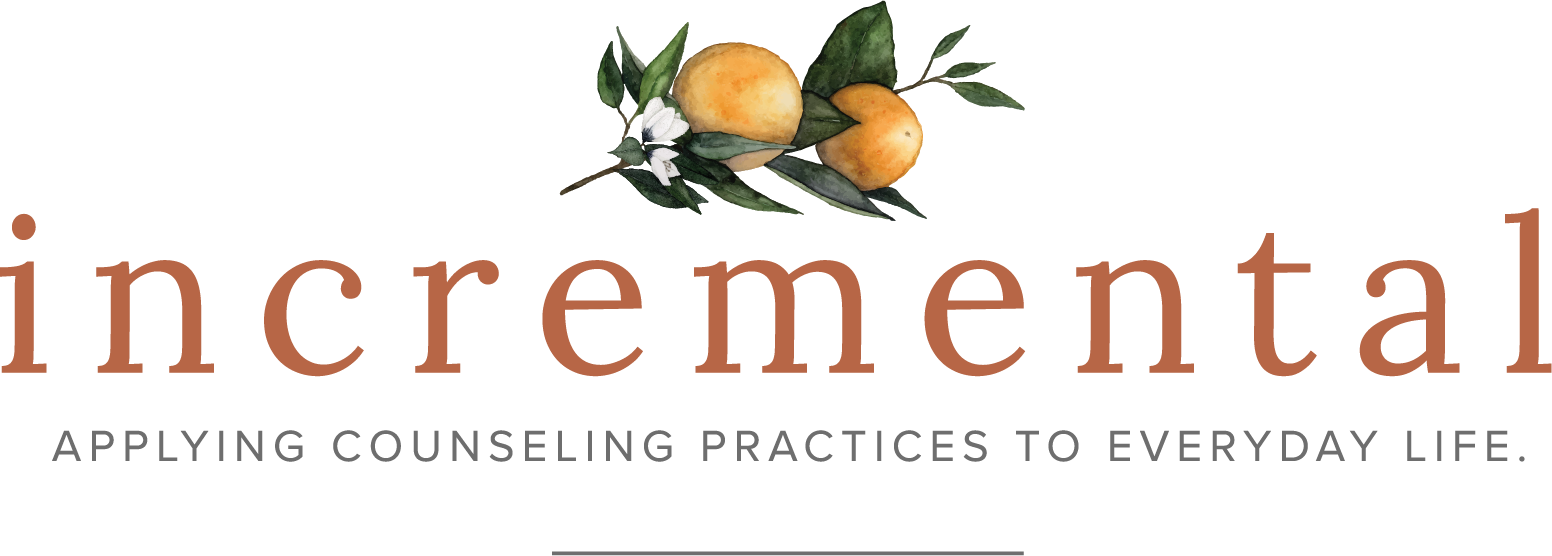The Foundation for the One
I chuckled to myself as I wrote the title of this blog post. If you read my last entry, it would seem as if I’m the person furthest away from being able to say what a successful relationship looks like. The phrase, “those who can’t do, teach” feels pretty poignant here. But, because I’m privileged to have great training in relationships and have my own rich experiences in life, I feel like I can still speak wisdom into this space despite my not-so-great batting average when it comes to dating. And also, like, I don’t need to explain myself, so here we go.
As I’ve worked with clients and watched them and the people in my life find their person there are a few key insights and patterns I’ve observed. If I can distill it down to one simple notion it’s this: finding your person should be hard; being with them should be easy. And not easy in the sense that there’s no challenge. Easy in the sense that the relationship isn’t draining, toilsome, or toxic. This idea is worth its own page, so for this post, I want to focus on these pillars that serve to show just how much goes into a healthy relationship and how fulfilling the relationship can be if they are all present. I call them the Four C’s for the Right Relationship.
Compatibility
There seem to be two camps when it comes to the science of compatibility: those who believe in the fireworks of “opposites attract” and those who believe compatibility comes in similarities. If you’re watching this current Dallas season of Love is Blind, you’ll probably recognize which couple falls into which camp. Nancy, one of the fiances in the show explicitly states in an interview how she’s trying to find the “male Nancy”.
Arthur Brooks, a well-respected social psychologist and author of the How to Build a Life Column on the Atlantic, argues that dating someone like you can actually be detrimental. He cites several studies in his article, The Common Dating Strategy That’s Totally Wrong which suggest, healthy love requires people to be complementary to each other vs. identical to one another. He found that couples who report the highest levels of happiness are those in which partners “round each other out”.
Too many differences, however, lead to a breakdown in communication, and partners often feel alienated or misunderstood by their partners. Esther Perel, goddess divine of couples counseling, suggests that compatibility comes with your ability to live life with that person. She coined this idea of love stories vs. life stories: you can love multiple people in this life but you can only live with a few of them. This suggests a need for some overlap in interests, beliefs, and values in order to engage in the daily tasks of life with a significant other.
So, my take? Like with most things in life, there needs to be a healthy balance. If you’re just like your partner, you may feel understood and validated, but there may not be any incentive to grow or be challenged. This can lead to stagnation and boredom becoming a looming character in the relationship. This leads me to my next C….
Connection
The key to turning compatibility into a desirable and fulfilling aspect of a relationship is connection. At the core of connection is curiosity. This is where I think the camp of “opposites attract” gets things right. If you’re constantly curious about your partner, then there’s a desire to connect with them. If you find yourself not wanting to know why your partner operates the way they do, then there’s a sign that the connection is waning. This is a balance too as trying to “solve the mystery” of a partner may not be fulfilling in the long run either.
A good connection is also characterized by a common form of emotional expression. By this I mean, there’s a vessel for curiosity and compatibility to be expressed. Common expressions of deep connection sound like, “I feel seen.”, “I can completely be myself with this person and I’m not afraid of being judged”, “I can talk to my partner about everything and anything”, and “We get lost in our time together”.
Some connections start out as really intense and can be a sign of trauma bonding. Some connections are slow and are the result of emotional expression developing as a relationship cultivates. Again, it’s necessary to evaluate the balance of the connections you strike. I’ll be posting about trauma bonding and forcing connection following this post if you want to learn more about this balance.
Capacity
This “C” is crucial to a successful relationship. It’s vital to know the capacity an individual has to be able to manage and undergo the challenges that arise in even the healthiest of relationships. Capacity here refers to the level of emotional intelligence and emotional bandwidth a person can bring to the relationship.
One of the reasons relationships become toxic is because partners may be compatible, connected, and committed to one another, but one or more partners are incapable of being able to experience emotional distress. If someone struggles to manage conflict, for example, they may consistently engage in behaviors such as defensiveness or contempt. Other individuals may be struggling with a significant physical or mental diagnosis and therefore do not have the capacity to show up for their partner. The myth is that love should be able to withstand these types of capacity issues, however, if the other partner cannot work to manage and resolve their own emotional issues, then no amount of love will be able to compensate for that deficiency.
Often times what I observe in my work with my clients and what I’ve experienced myself is that sometimes an emotional connection can be really strong but one or both individuals aren’t able to mentally, logistically, or emotionally hold the necessary space for the connection to turn into a secure relationship. An example of this may be if one individual is prioritizing other aspects of life that make it hard to make space for the daily input necessary to sustain a relationship. A common example I’ve observed in heterosexual relationships is when male partners believe they need to focus on work or their other life structures and therefore can’t provide time or intention in connection.
The timing of things is also present when it comes to this “C”. Few things are more emotionally painful than striking a strong connection with someone and the “timing” is off. Timing aspects can include one’s geographical location or even the timing of when someone is getting in and out of a relationship. I know the cinematic heartache of feeling really connected to someone but not being available at the same time to explore that romantic possibility. Timing is everything and countless books, songs, and stories explore the conflict of choice vs. circumstance because of this fact.
Commitment
Ultimately a relationship can’t be stable, secure, and safe if there’s no commitment. In a time where there are 32 stages to dating, commitment can feel incredibly elusive. It’s almost as if we’ve made the commitment to dating akin to engagement or marriage. The point of commitment is to provide a safe space to develop a romantic relationship to see if it can lead to a long-lasting relationship without the threat of endless choices. It is a way of engaging in active decision-making and evaluation to say “this is what I want now and I’m hoping it’s what I want later”. Commitment allows for there to be a deeper exploration into connection and compatibility in an intentional way. It also encourages self-discipline so as to increase the capacity for relationships.
I often tell clients that if one of these four “C's” is missing, then there’s a likely chance a relationship will fail. I encourage them to use these four criteria as it creates a solid baseline and compass to evaluate a relationship when experiencing healthy doubt about the longevity and vitality of a relationship. Know that in order to really know, time, open communication, and intentionality is crucial.
And once you find someone who helps build these pillars of a relationship and keeps them there, rest in the knowledge that you may have just found your person.

